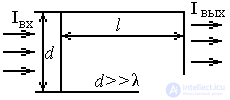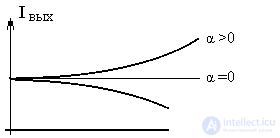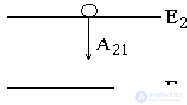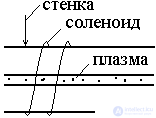The body is represented as a solid homogeneous substance. For this are determined  and
and  , and
, and  :
:
 .
.

Figure 2.
Basically  can be represented as frequency wave numbers, according to the law of Bouguer:
can be represented as frequency wave numbers, according to the law of Bouguer:
K = ReK + ImK,  .
.
According to Bouguer's law, the convenience of this law is that the input and output intensities consider the primary parameters, and the secondary parameters  and
and  considered as a quadruple.
considered as a quadruple.
 .
.
From this expression it follows that the wave, having passed through the medium, has some attenuation and phase shift:

Figure 3.
 ,
,
where the right expression falls into two conditions: the balance of the amplitudes and the balance of the phases, and will be equal to one if:
one)  - amplitude balance;
- amplitude balance;
2)  where m = 0,1,2,3 ..., and 2l is the full pass in the laser device.
where m = 0,1,2,3 ..., and 2l is the full pass in the laser device.
Types of transitions.
1. Induced transitions.
In the transition from the lower to the upper level, light absorption occurs. In the reverse transition - induced radiation.

Figure 4.
The frequency, phase of the excited field completely coincides with the excited radiation (spontaneous emission of the input signal). For a two-level system, active absorption and excitation will occur with probability  . Induced radiation is possible in the presence of an external field.
. Induced radiation is possible in the presence of an external field.
2. Spontaneous transitions.

Figure 5.
This is not related to the external field, but is determined by the probability of the particle’s natural life at the upper level.  . Time constant
. Time constant  determines the width of the spontaneous emission zone
determines the width of the spontaneous emission zone  Spontaneous radiation affects the frequency of the spectrum.
Spontaneous radiation affects the frequency of the spectrum.
3. Radiating transitions.

Figure 6.
They are characterized by the fact that the excited particles touch the limited volume of the discharge tube and give it energy. Their temperature drops. The optimal ratio of the diameter of the tube and plasma for geleleonovogo tube has 8 mm. To get more power, the laser is compressed by a magnetic field.


Comments
To leave a comment
Quantum electronics
Terms: Quantum electronics